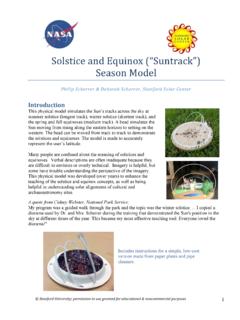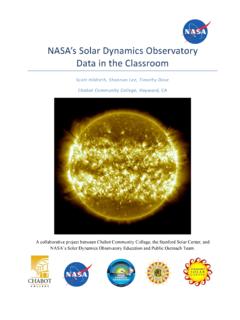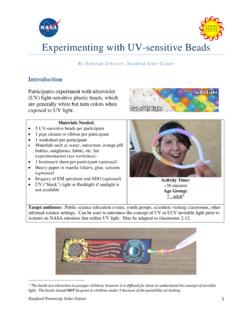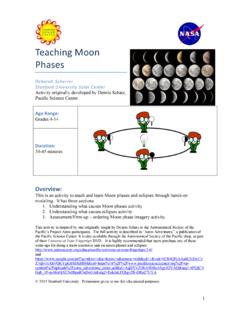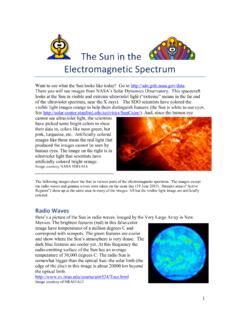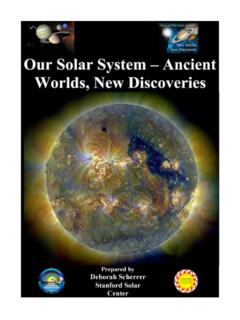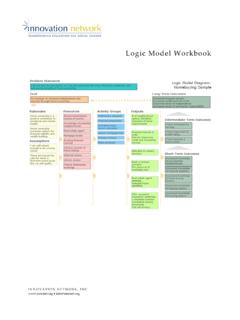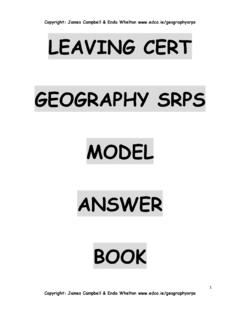Transcription of Solar System Scale Model - Stanford University
1 Solar System Scale Model Deborah Scherrer, Stanford Solar Center Target Audiences: Public science events Activity Time: Youth groups 15-20 minutes Science museums, planetaria Astronomy clubs Community events Age Group: Other Informal Science educational 9-adult locations & events Materials Needed: diameter scaled Sun ( balloon, whatever). Scale models of the 8 planets, asteroids, Kuiper belt objects 3 differently-scaled versions of Earth, including 1 that matches your scaled Earth Toy car or other Scale Model example Extra Earth marbles (optional). Eclipse glasses (optional). Printed satellite image of event location (optional). Transparent overlay of scaled planet orbits (optional).
2 Background: The Scale of our Solar System is difficult to imagine when we are standing on what appears to be a large planet looking at an apparently small Sun. Pictures don't help much. Although we could print the planet sizes to Scale , the paper would need to be way too large to show the scaled distances. Instead, to help you understand the sizes and distances of our Solar System , we've created a Scale Model . Our Solar System , real imagery but not to Scale Stanford University ; permission to use granted for educational & noncommercial purposes 1. Process: 1. Ask your audience if they know what a Scale Model is. A Scale Model is a representation or copy of something that is larger or smaller than the actual object but maintains the relative proportions.
3 The cars in the image on the right are all Scale models that represent real cars. Each has been made to a different Scale ' or amount smaller'. than a real car. Show participants an actual toy car or other Scale Model example. 2. Show the audience the balloon or your scaled Sun. Ask them what they think it is? This is a good time to talk about the color of the Sun (white) and why it looks yellow or orange at sunrise/set (because the blue, green, & violet colors are filtered out by the thick atmosphere). 3. In our Model , the Sun has been scaled down to a (8 ) balloon. How large would the scaled Earth be? Show the audience the 3 Model Earths and ask them to estimate which is the correct size for our balloon Sun.
4 [23 mm blue marble] This would be a good time to mention that 1. millions Earths would fit inside the Sun, and it would take 109 Earths strung across the disc of the Sun at the equator. 4. Ask the participants how far away should the Earth marble be placed to be in Scale with the Sun balloon. Ask questions to make sure they understand the concept of scaling distance as well as size if all proportions are kept, then distance scales just as size does. Thus something scaled down to half size would also be scaled to half the distance. Hand out some Earth marbles and have the audience stand as far away as they believe the Scale Earth should be placed. Accept all answers.
5 Collect the Earth marbles! Stanford Solar Center Scale Model 2. 5. How could they figure out how far away to place their Earth marble? If you have eclipse glasses, have participants put them on. If not, caution the participants that prolonged staring at the Sun can damage their eyes. Ask participants to hold one arm straight out and use the smallest piece of their hand they can to cover up the Sun they should only glance up quickly or wait for sunset or thin clouds! What piece did they use? [pinkie fingernail] Now, have them hold up that same piece of their hand and try to cover up the Sun balloon. How far back would they have to walk to be able to cover the balloon with their little fingernail?
6 Let them try to back up to figure it out [~270m]. This works because in our Scale Model , all the proportions remain the same as the real Sun and Earth! 6. Show participants the rest of the Model planets and ask them to identify each. Remind them all the planets are to Scale . This is a good time for discussion between the presenter and the participants on what they know about the planets and what questions they might have. 7. If you have one, show participants the satellite map of the area and the orbit overlays. Encourage discussion and questions. 8. If participants are still excited and engaged, explore the relative sizes of the nearest star, our galaxy, and the universe (as on the attached worksheets).
7 Stanford Solar Center Scale Model 3. ** Scale Model Worksheet **. 1. The instructor will show you 3 Model Earths to choose from. Which Model Earth is the correct size/ Scale for our Model Sun? A _____ B _____ C_____. 2. How many Earths would fit inside the Sun? _____. 3. The instructor will show you the Scale Model Earth and Moon. The real Moon is about 385,000. km from the Earth, about 30 times the Earth's diameter. How far away should the Scale Moon be placed from the Scale Earth? _____. 4. The Sun is 150,000,000 km from the Earth. How far away should our Scale Earth be placed from the balloon Sun? Hint: you can figure this out with math: __distance _____ = _ so distance = 270 meters 150,000,000 km 23 mm Or, there's an easier way: Hold your arm straight out, glance up at the Sun and use the smallest piece of your hand you can to cover up the Sun.
8 What piece did you use? _____. Now, hold up that same piece of your hand and try to cover up the Sun balloon. How far back would you have to walk to be able to cover the balloon with your little fingernail? _____. This works because in our Scale Model , all the proportions remain the same as the real Sun and Earth! 5. The instructor will show you the other scaled planets, the asteroid belt, and some Kuiper belt objects. Can you identify the other objects in our Scale Model ? Stanford Solar Center Scale Model 4. _____ _____ _____. _____ _____ _____. _____ _____ _____. Stanford Solar Center Scale Model 5. 6. Here is a picture of our Sun compared with the nearest star, Proxima Centauri.
9 On our Scale , where the Sun is a balloon, how large do you think Proxima Centauri would be, and how far away? Scaled size of nearest star: _____. Scaled distance of nearest star: _____. Size to Scale but not distance 7. Here is a painting of our Milky Way galaxy, with the Sun marked. The galaxy is 100,000 light-years across. On our Scale , where the Sun is a balloon, how big would this galaxy be? _____. 8. Our Milky Way is only one of billions and billions of galaxies. If our Milky Way were scaled to the size of a 250mm paper plate, how far away would the nearest (large) galaxy be? Now, imagine billions and billions of paper plate galaxies! Stanford Solar Center Scale Model 6.
10 Answers 1. The instructor will show you 3 Model Earths to choose from. Which Model Earth is the correct size/ Scale for our Model Sun? C 23 mm marble (the smallest). 2. How many Earths would fit inside the Sun? ~1 million 3. The real Moon is about 385,000 km from the Earth, about 30 times the Earth's diameter. How far away should the Scale Moon be placed from the Scale Earth? ~180mm or .7 m 4. The Sun is 150,000,000 km from the Earth. How far away should our Scale Earth be placed from the balloon Sun? Your little fingernail would cover up the Sun, and you would need to walk back ~270m to cover the balloon with your little fingernail. 5. Planets on the worksheet, in order from left to right and top to bottom: Mercury, Venus, Mars, asteroids, Jupiter, Saturn, Uranus, Neptune, Kuiper belt (includes Pluto).
